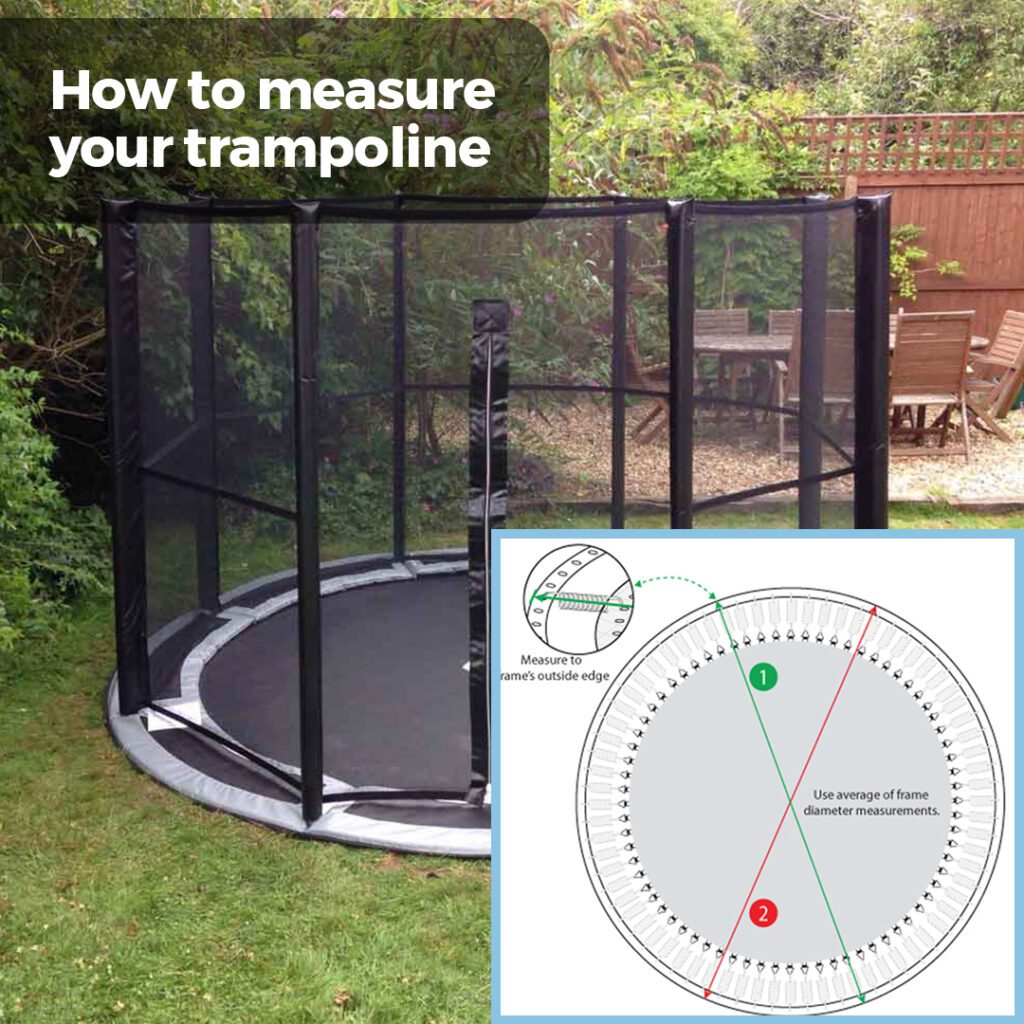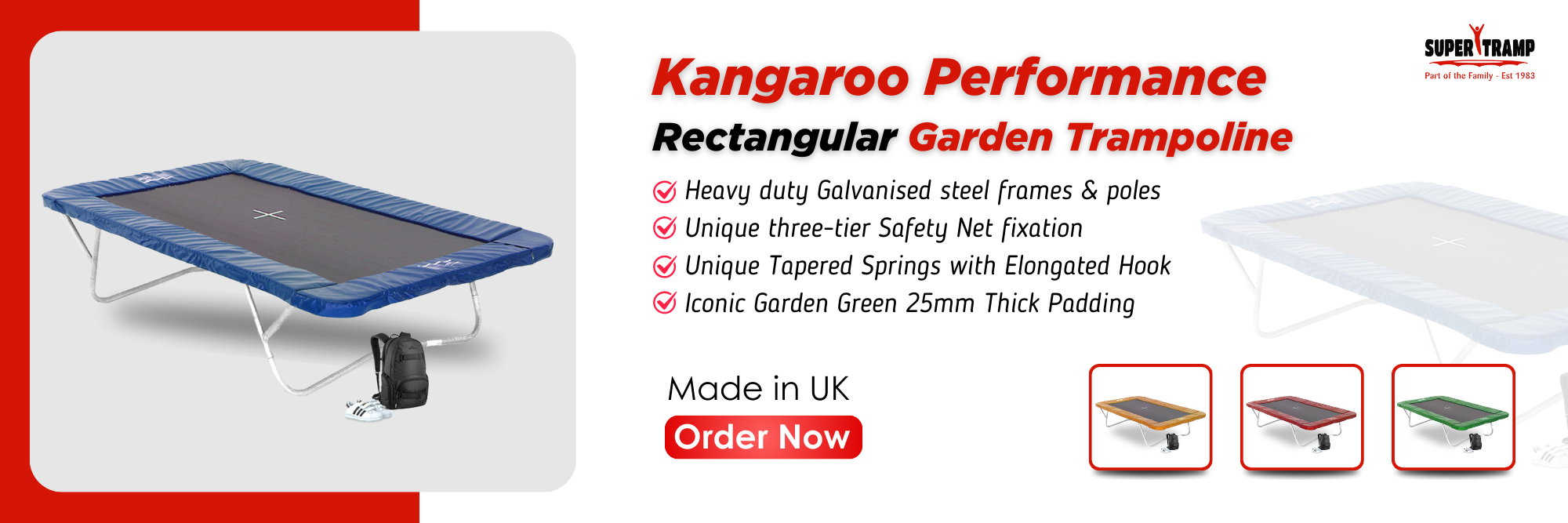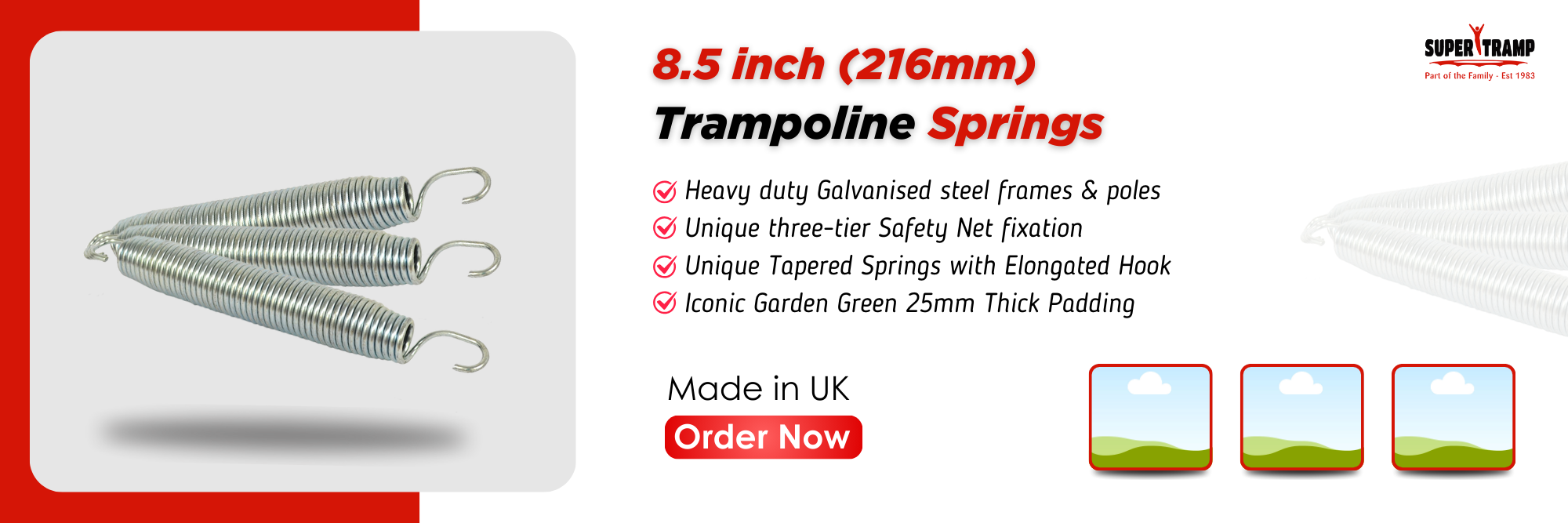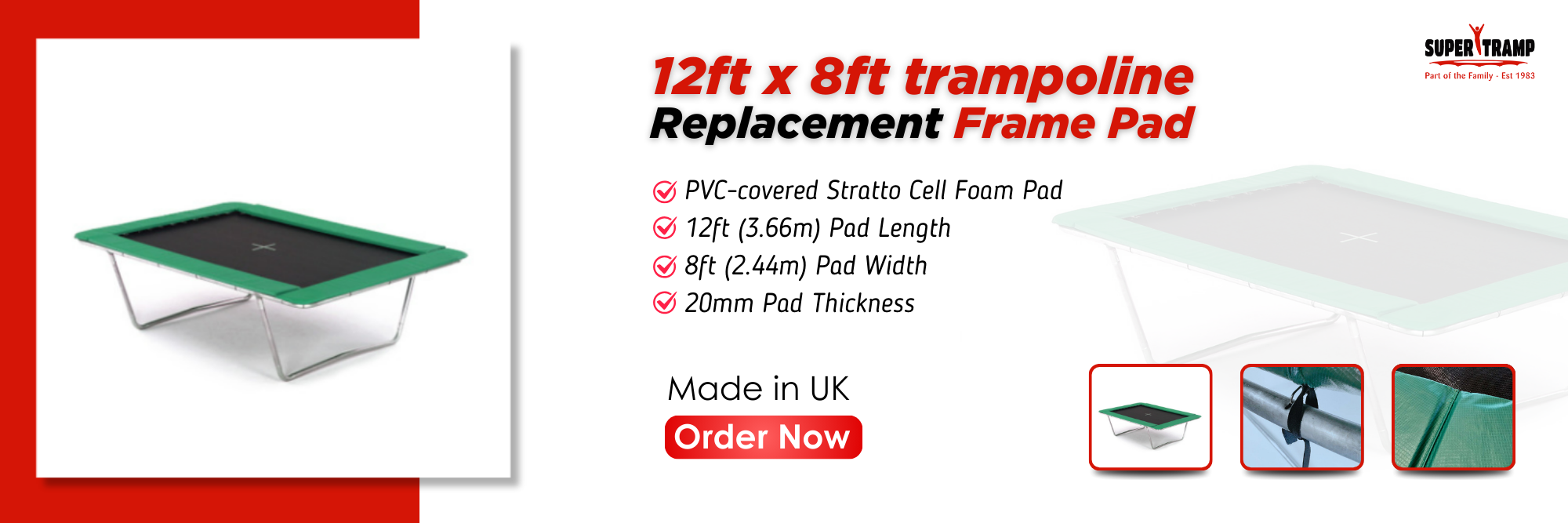So you’re looking to replace a damaged spring or worn-out pad on your trampoline but need to know where to start. The key is accurately measuring your trampoline to determine which replacement parts will fit properly. With a measure tape in hand and a few minutes of your time, you’ll have the information you need to find parts that match your specific trampoline make and model.
Table of Contents
Toggle
The Importance of Properly Measuring Your Trampoline
If you need to replace parts on your garden trampoline, the first step is to measure them correctly. With the correct measurements, you can avoid ordering parts that will fit and save time and money.
To measure your trampoline, you’ll need a measure tape, a spring gauge, and a way to count the spring attachments, like a marker or clothespin. For round trampolines, measure from the outer edge to the outer edge of the frame to get the diameter. Then, use a spring gauge or ruler to measure one of the springs from end to end. Finally, count the number of spring attachments around the edge of the mat.
For rectangular trampolines, measure the length and width of the frame in feet and inches. Again, measure one of the springs and count the spring attachments. Refer to the manufacturer’s sizing chart to determine your trampoline’s make and model based on these measurements. Some standard sizes for home trampolines are 10×6 feet, 16×9 feet, and 14×8 feet.
Correctly measuring and identifying your trampoline is critical. With this information, you could avoid ending up with parts that don’t fit, ruining your trampoline, or creating safety issues. It only takes a few minutes to measure and will save you time, money, and frustration in the long run. Your trampoline will thank you, and so will your wallet!
These easy steps to determine your trampoline’s measurements and specifications will make finding compatible replacement parts a breeze. Happy bouncing!
Step-by-Step Guide to Measuring a Round Trampoline
To find the right replacement parts for your round trampoline, you’ll need to do some measuring. Following these simple steps, you can identify the make and model to get the correct springs, pads, nets, or other accessories.
- First, measure the frame from the outer edge to the outer edge. Use a measure tape to get the diameter in feet and inches. Round down to the nearest whole number. For example, if your measurement is 10 feet, 6 inches, your trampoline frame size is 10 feet.
- Next, carefully remove one of the springs and measure it from hook to hook. Your spring will have stretched a bit from use, so round down to the nearest standard spring size, typically 5.5, 7, 8.35, 8.5-inch spring, or 9.25 inches. Note the spring size.
- Finally, count the number of spring attachments around the edge of the jump mat or bed. These are the small metal or plastic triangles the springs attach to. Count them as you go around the edge.
With the frame size, spring size, and number of spring attachments, you can determine the make, model, and size of your round trampoline. Refer to the measurement guide on the retailer’s or manufacturer’s website to match your stats and find the right parts. Some examples are:
- 8ft frame, 5.5-inch springs, 48 spring attachments—8ft round trampoline with 5.5-inch springs
- 10ft frame, 7-inch springs, 54 spring attachments—10ft Superflyer MK3, Eclipse or Springtime model (2014-2019)
- 12ft frame, 8.5-inch springs, 80 spring attachments—12ft Fun Bouncer model (2009 onwards)
By taking a few minutes to measure and identify your round trampoline, you’ll save time and hassle to get the correct replacement parts when needed.
Step-by-Step Guide to Measuring a Rectangular Trampoline
Measuring your trampoline to find replacement parts is easier than you might think. Follow this step-by-step guide to determine the size and critical measurements of your rectangular trampoline.
Find the Length and Width
First, measure the length and width of the trampoline frame in feet and inches. Make sure to measure from the outer edge of one side of the frame to the outer edge of the opposite side. Write down these measurements—you’ll need them to determine the size and model of your trampoline.
Measure a Spring
Carefully remove one of the springs from the trampoline mat. Measure the spring from one end to the other in inches. Springs naturally stretch over time, so round down to the nearest standard spring size: 5.5 inches, 7 inches, 8.35 inches, 8.5 inches, 8.57 inches, or 9.25 inches. Note the spring size, which will also help determine the trampoline model.
Count the Spring Attachments
Look at your in ground trampoline mat and count the number of spring attachments around the edge. These are typically small metal triangles or plastic connectors that attach the springs to the mat. Start at any point on the edge of the mat and work your way around, counting each spring attachment. Write down the total number.
Determine Your Trampoline Size and Model
Using the measurements you recorded for frame length/width, spring size, and number of spring attachments, refer to the size chart to determine your trampoline model. For example, if your frame is 10 feet 6 inches x 7 feet, your spring is 7 inches, and you have 52 spring attachments, you likely have an Action 17 garden trampoline.
Knowing details like the size, model, spring type, and number of attachments will ensure you get replacement parts that properly fit your specific trampoline. Take your time measuring and be as accurate as possible for the best results. If you have any doubts or need clarification, don’t hesitate to contact the trampoline manufacturer.
Using Your Measurements to Identify Replacement Parts
Now that you have the measurements of your trampoline frame and springs, you can start shopping for replacement parts. The size and model details you’ve gathered will ensure you purchase components that properly fit your trampoline.
Finding a Replacement Mat
The number of spring attachments around the edge of your mat indicates its size and shape. For a round trampoline, look for a mat with the same number of attachment points. Rectangular mats are specified by length and width in feet, so match those dimensions.
Mats come in polypropylene mesh or woven fabrics like polyester. Polypropylene, called “poly mesh,” is very durable and weather-resistant. Consider how often and intensely you use your trampoline to determine which material suits you.
New Safety Padding
Measure the diameter, length, and width of your trampoline frame to find padding that will adequately cover it. Frame padding is usually made of vinyl, polyethene, or PVC and comes in various thicknesses. Thicker padding provides more protection but may be more challenging to install. Choose a thickness and material that balances safety, cost, and ease of installation.
Replacing Springs
Count the number of spring attachment points around the edge of your mat to determine how many replacement springs you need. Then, measure one of your existing springs to find the correct size. Springs are specified by length in inches, typically from 5.5 to 9.25 inches for most recreational trampolines.
For the best performance, replace all of the springs at once. Mixing old and new springs of different lengths or tensions can make for an unbalanced, uneven bounce.
New Poles and Netting
For safety enclosures, measure the height and diameter, or length and width, of your trampoline frame to find a net that properly encloses it. Netting is typically made of polyethene mesh and specified by the size of openings, such as 1 inch x 1 inch or 1 inch x 2 inches. Smaller openings mean less chance of extremities getting caught.
Measure your existing enclosure poles to determine the correct length and diameter of replacements. Poles are typically made of galvanised steel or aluminium. Ensure any new poles you purchase are specifically meant to support trampoline netting for maximum safety.
Conclusion
So there you have it: a few simple steps to measure up your trampoline and find the right replacement parts. After a few seasons of high-flying fun, bits and pieces can start to wear out or break—but don’t let that stop you! With the handy tips here, you’ll be sourcing quality replacement pads, nets, springs, and mats quickly. Measuring accurately is vital, so take your time and be precise. Once you’ve got the numbers, you can shop confidently, knowing the new parts will fit like a glove. Your trampoline will be back in tip-top shape and ready for many more memorable moments of bouncing bliss in the garden.
FAQ's
How should a trampoline be measured for replacement parts?
To measure for replacement parts, measure the trampoline mat diameter, count the springs, measure a spring’s length, note the frame diameter, and identify the spring attachment style.
How to know what size of trampoline I have?
Measure the trampoline’s diameter from edge to edge, excluding the frame. This measurement represents the size of your trampoline.
How do you measure trampoline springs for replacement?
Measure the length of a spring from hook end to hook end when not attached to the trampoline. This measurement helps in finding suitable replacements.
Can you use different size springs on a trampoline?
It’s not recommended to use different size springs on a trampoline. Uniform spring size ensures even tension and safe bouncing.
How long do springs last on a trampoline?
The lifespan of trampoline springs varies. Generally, they last 5-10 years with proper care.





